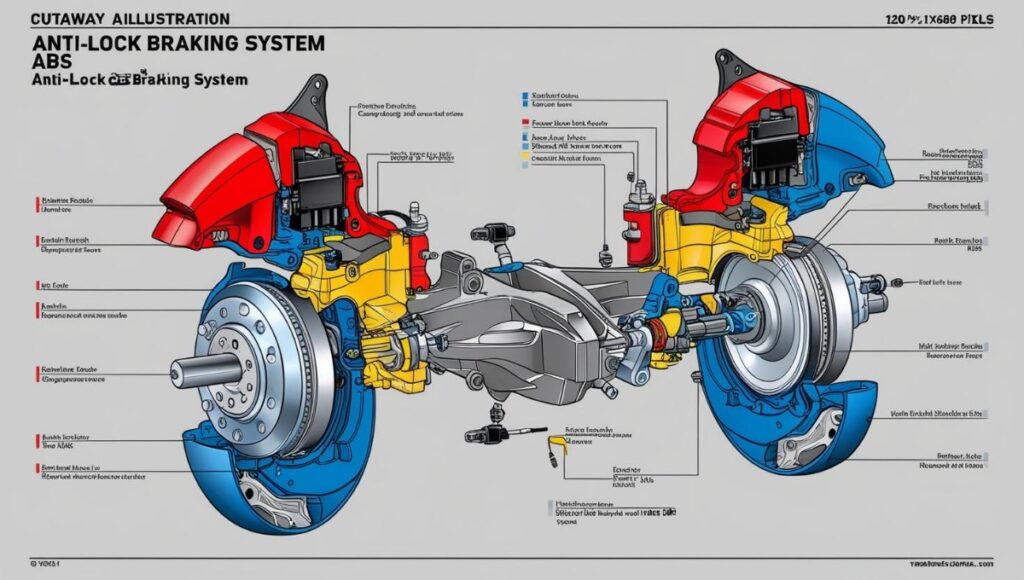
Table of Contents
1. Understanding Your Needs
Before you dive into the car-buying process, it’s essential to identify your specific needs. Your choice of car should align with your lifestyle, daily routine, and long-term plans.
Purpose of the Car:
- Daily Commute: For city driving, a small, fuel-efficient car like a hatchback or compact sedan is ideal. These are easy to park, economical, and practical.
- Family Use: Families require spacious vehicles, such as SUVs or MPVs, which offer ample legroom, boot space, and safety features.
- Adventure/Off-Road: If you love exploring rough terrains, a 4×4 SUV with good ground clearance and robust suspension is a must.
- Luxury or Status Symbol: Premium brands like BMW, Mercedes, and Audi offer advanced technology, unmatched comfort, and a prestigious image.
Budget Considerations:
- On-Road Price: This includes the ex-showroom price, road tax, insurance, and registration fees.
- Running Costs: Consider monthly fuel expenses, maintenance, and periodic servicing.
- Depreciation and Resale Value: Choose a car brand with high resale demand to minimize losses when you decide to upgrade.
2. Types of Cars Available
Understanding the various car categories can help you narrow down your options.
Hatchback:
- Compact and affordable, hatchbacks are perfect for urban areas.
- Popular models include Maruti Suzuki Swift, Hyundai i20, and Tata Altroz.
Sedan:
- With a spacious boot and comfortable interiors, sedans are great for families or long drives.
- Examples: Honda City, Hyundai Verna, and Skoda Slavia.
SUV:
- SUVs are powerful and versatile, suited for rough roads or off-road adventures.
- Popular options include Tata Harrier, Mahindra XUV700, and Hyundai Creta.
MPV:
- Ideal for larger families, these multi-purpose vehicles offer flexible seating arrangements.
- Examples: Toyota Innova Crysta, Kia Carens, and Maruti Suzuki Ertiga.
Electric Cars (EVs):
- Eco-friendly and economical in the long run, EVs are gaining popularity.
- Leading models: Tata Nexon EV, Hyundai Ioniq 5, and MG ZS EV.
Hybrid Cars:
- Combining a petrol engine with an electric motor, hybrids offer the best of both worlds.
- Examples: Toyota Camry Hybrid, Honda City e:HEV.
Luxury Cars:
- These vehicles focus on top-tier comfort, performance, and cutting-edge technology.
- Brands to consider: Mercedes-Benz, BMW, and Audi.
3. Features to Look For
The features of a car can significantly impact your driving experience. Here are some to prioritize:
Safety Features:
- Must-Haves: Airbags, ABS (Anti-lock Braking System), EBD (Electronic Brakeforce Distribution), and Hill Assist.
- Advanced Features: ADAS (Autonomous Driving Assistance Systems), lane departure warning, adaptive cruise control, and blind-spot monitoring.

Technology:
- Modern infotainment systems with touchscreen displays, Apple CarPlay, and Android Auto enhance convenience.
- Look for features like wireless charging, keyless entry, and connected car technology for added ease.
Performance:
- Choose between petrol, diesel, hybrid, or electric engines based on your usage.
- Check the power output (measured in BHP and torque) and fuel efficiency (km/l for ICE cars or kWh for EVs).
4. Electric vs. Petrol/Diesel Cars
Advantages of Electric Cars (EVs):
- Eco-Friendly: Zero emissions contribute to a cleaner environment.
- Low Running Costs: Electricity is cheaper than petrol or diesel, and EVs have fewer moving parts, reducing maintenance costs.
- Incentives: Government subsidies and lower taxes make EVs an attractive option.
Disadvantages of EVs:
- High Initial Cost: EVs tend to be more expensive upfront than ICE cars.
- Range Anxiety: Limited range and sparse charging infrastructure can be challenging for long trips.
Petrol/Diesel Cars:
- Advantages:
- Petrol engines are smoother and refined, suitable for city driving.
- Diesel engines offer better mileage and are ideal for long-distance travel.
- Disadvantages:
- Rising fuel prices and stricter emission norms make ICE cars less economical over time.
5. How to Research Cars
Online Platforms:
Websites like CarDekho, Zigwheels, and Autocar India provide detailed comparisons, reviews, and price breakdowns.
Expert Reviews:
Follow automotive YouTube channels and blogs for insights on performance, build quality, and after-sales service.
Test Drive:
Always test drive shortlisted models to evaluate comfort, handling, visibility, and noise levels.
Reliability and Longevity:
Read ownership reviews and check brand reputation for reliability and service quality.
6. Financing Your Car
Loan Options:
- Compare interest rates from banks and NBFCs.
- Understand the terms, including tenure, down payment, and processing fees.
Leasing vs. Buying:
- Leasing involves lower monthly payments but doesn’t offer ownership.
- Buying is a better option for long-term use and offers resale value.
Hidden Costs:
- Registration fees, extended warranties, insurance premiums, and accessories can add to your expenses.
7. Documentation and Registration
Essential Paperwork:
- Sale agreement, invoice, and insurance documents.
- Loan approval papers, if applicable.
RTO Registration:
- Apply for permanent registration and obtain your vehicle’s number plate.
- Opt for vanity plates if desired (at an additional cost).
Insurance:
- Choose comprehensive insurance that covers third-party liabilities and damages.
8. After-Sales Services
Warranty:
- Understand the coverage offered by the manufacturer’s warranty and consider an extended warranty for added protection.
Maintenance:
- Enroll in an Annual Maintenance Contract (AMC) to keep servicing costs predictable.
- Take advantage of free service periods offered by manufacturers.
Authorized Service Centers:
- Choose a service center with a good reputation for quality work and genuine spare parts.
9. Tips for First-Time Car Buyers
Negotiation Techniques:
- Research the market price of your chosen car and negotiate with dealers for discounts or complimentary accessories.
- Compare offers from multiple dealerships to get the best deal.
Avoiding Mistakes:
- Don’t overpay for unnecessary features or add-ons.
- Choose practicality and reliability over flashy designs or brand prestige.
Resale Value:
- Opt for popular brands and models known for retaining value.
- Maintain your car by following service schedules and keeping it in good condition.
10. Different price car
1 to 5 Lakh INR (On-road prices)
- Maruti Suzuki Alto K10
- On-road Price: ₹4.50 lakh – ₹5.00 lakh
- Mileage: 22.97 kmpl
- Engine: 998cc
- CNG variant available
- Renault Kwid
- On-road Price: ₹5.40 lakh – ₹6.00 lakh
- Mileage: 22 kmpl
- Engine: 999cc
- Tata Tiago
- On-road Price: ₹5.40 lakh – ₹6.20 lakh
- Mileage: 19-28 kmpl
- Engine: 1199cc
- Maruti Suzuki Celerio
- On-road Price: ₹5.60 lakh – ₹6.20 lakh
- Mileage: 25.1 kmpl
- Engine: 998cc
- CNG variant available
- Maruti Suzuki S-Presso
- On-road Price: ₹5.10 lakh – ₹5.70 lakh
- Mileage: 24.4 kmpl
- Engine: 998cc
5 to 10 Lakh INR (On-road prices)
- Hyundai Grand i10 Nios
- On-road Price: ₹6.50 lakh – ₹7.20 lakh
- Mileage: 20-24 kmpl
- Engine: 1197cc
- Tata Altroz
- On-road Price: ₹7.10 lakh – ₹8.00 lakh
- Mileage: 19-25 kmpl
- Engine: 1199cc
- Maruti Suzuki Baleno
- On-road Price: ₹8.10 lakh – ₹9.00 lakh
- Mileage: 23.87 kmpl
- Engine: 1197cc
- Honda Amaze
- On-road Price: ₹7.50 lakh – ₹8.50 lakh
- Mileage: 18-24 kmpl
- Engine: 1199cc
- Nissan Magnite
- On-road Price: ₹7.00 lakh – ₹7.90 lakh
- Mileage: 18-20 kmpl
- Engine: 999cc
10 to 15 Lakh INR (On-road prices)
- Kia Sonet
- On-road Price: ₹12.50 lakh – ₹14.00 lakh
- Mileage: 17-24 kmpl
- Engine: 1197cc
- Hyundai i20
- On-road Price: ₹11.50 lakh – ₹12.50 lakh
- Mileage: 19-25 kmpl
- Engine: 1197cc
- Mahindra XUV300
- On-road Price: ₹12.20 lakh – ₹13.50 lakh
- Mileage: 17-20 kmpl
- Engine: 1497cc
- Honda City
- On-road Price: ₹13.50 lakh – ₹15.00 lakh
- Mileage: 17-24 kmpl
- Engine: 1498cc
- Maruti Suzuki Vitara Brezza
- On-road Price: ₹12.50 lakh – ₹13.50 lakh
- Mileage: 17-18 kmpl
- Engine: 1462cc
15 to 25 Lakh INR (On-road prices)
- Kia Seltos
- On-road Price: ₹18.00 lakh – ₹20.50 lakh
- Mileage: 16-21 kmpl
- Engine: 1353cc
- Hyundai Creta
- On-road Price: ₹19.50 lakh – ₹21.00 lakh
- Mileage: 16-21 kmpl
- Engine: 1493cc
- MG Hector
- On-road Price: ₹17.50 lakh – ₹20.00 lakh
- Mileage: 13-17 kmpl
- Engine: 1451cc
- Skoda Octavia
- On-road Price: ₹21.50 lakh – ₹24.00 lakh
- Mileage: 15-18 kmpl
- Engine: 1498cc
- Tata Harrier
- On-road Price: ₹17.50 lakh – ₹20.50 lakh
- Mileage: 17-20 kmpl
- Engine: 1956cc
RESULT
Buying a car is a long-term investment that requires careful consideration. By understanding your needs, researching thoroughly, and planning your finances, you can make a confident and informed decision. Whether you’re looking for a fuel-efficient hatchback, a spacious family SUV, or an eco-friendly EV, this guide ensures you’re well-prepared for the journey ahead.
Let us know your car-buying experiences or questions in the comments below!
In which company you want
safety features then go for TATA
pricing then go for MARUTI

